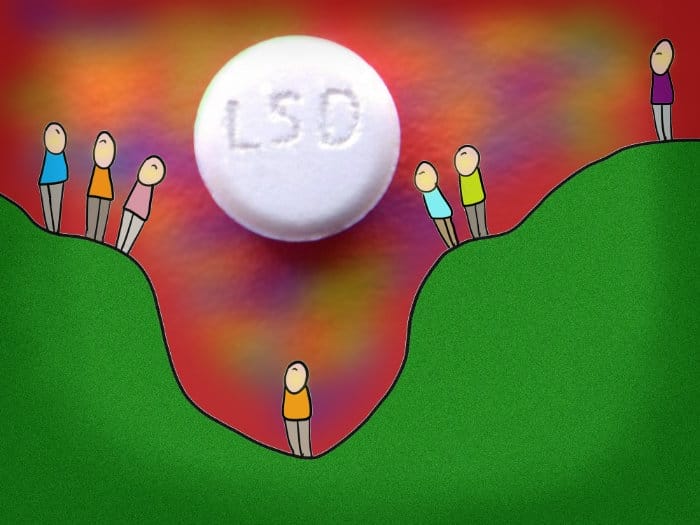I’ve never tried it, and I probably never will. But here is where the attraction started for a lot of other folks. The Swiss scientist Dr. Albert Hofmann discovered the psychedelic effects of LSD on this date, April 16, in 1943. Three days later, he would try it for himself on the 19th, a day known as “Bicycle Day.”
LSD (lysergic acid diethylamide) is a synthetic chemical. It is made from a substance found in ergot, which is a fungus that infects rye — the grain. Like rye bread.
LSD belongs to a group of drugs known as psychedelics. I know a couple of my sisters have done LSD. I was just a kid back then and watched, both amused and concerned, as they stood around flushing the toilet, then pointing and laughing.
You see, when small doses are taken, it can produce mild changes in one’s perception. It can also affect someone’s mood and thoughts. But taken in larger doses, it may produce visual hallucinations. Those big distortions of space and time.
Here is something. We have about 332 million people living in the United States at this moment. A recent survey by the National Household Survey on Drug Abuse reported that “an estimated 20.2 million U.S. residents aged 12 and older used LSD at least once in their lifetime.” That turns out to be about 6 people out of every 100.
So. From what I’ve read, the effects associated with LSD use are unpredictable. The results can depend on anything in the world. Of course, the amount taken is always critical. But other things affect the user, such as the surroundings in which the drug is used, the user’s personality, their current mood, and so on.
And it certainly isn’t all fun and games. Some LSD users experience a feeling of despair. Some have horribly and terrifying fears. Still others have said they felt like they were losing control, going insane, or dying. And then, there are times when people have suffered fatal accidents while using LSD.
Another thing that happens with LSD users is that they often have flashbacks, even though they have stopped taking the drug. And others develop long-lasting psychoses, such as schizophrenia or severe depression.
In recent news — 60 Minutes for one — LSD is being used as a treatment for alcoholism and other addictions as well as the treatment of anxiety, depression, and psychosomatic diseases. There have been great strides in this field, but I think the jury is still out on the true successes of these programs. ( https://www.cbsnews.com/video/is-lsd-a-wonder-drug-for-mental-health/ )
Back to good Dr. Hoffman, the man who discovered the effects. Hofmann continued to take small doses of LSD throughout his lifetime. He always hoped to find a use for it, a sort of mainstream element.
Dr. Hoffman referred to LSD as a “sacred drug.” He added: “I see the true importance of LSD in the possibility of providing material aid to meditation aimed at the mystical experience of a deeper, comprehensive reality.”
The guy lived to be a healthy 102 years old. He was interviewed shortly before his 100th birthday, and that is when he called LSD “medicine for the soul.” Throughout his life, he voiced his frustration by its worldwide prohibition.
The guy loved LSD.
As for me? I’ll just have to take his word for it.
=====
“When the light turns green, you go. When the light turns red, you stop. But what do you do when the light turns blue with orange and lavender spots?”
― Shel Silverstein, A Light in the Attic
=====
“Taking LSD was a profound experience, one of the most important things in my life. LSD shows you that there’s another side to the coin.”
― Steve Jobs
=====
“I’ve tried everything. I can say to you with confidence, I know a fair amount about LSD. I’ve never been a social user of any of these things, but my curiosity has carried me into a lot of interesting areas.”
― Dan Rather
=====
LSD. Like, lysergic acid diethylamide. The weird.
